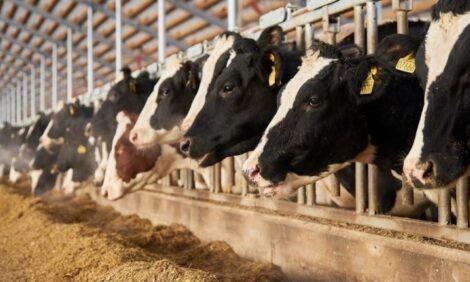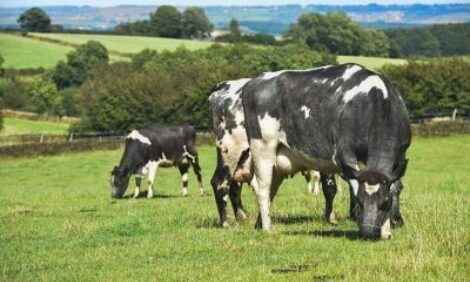



Molds and Mycotoxins – Dairy Management Strategies
The presence of molds and mycotoxins in feeds can be a cause of concern for dairy and livestock producers, write L. E. Chase and T.R. Overton, Department of Animal Science Cornell University.Even though these can be a problem in some situations, they should not be the first area examined when animal feed related problems develop.
What do we know about the effects of molds and mycotoxins on dairy animals? There are numerous limitations and gaps in the information available. Theses include:
- Very little controlled research has been conducted with dairy cattle.
- The majority of the research trials use varying levels of 1 mycotoxin added to a clean ration to evaluate animal responses.
- In the field, it is highly likely that a number of mycoctoxins may be present in the suspect feed. There are hundreds of mycotoxins that exist in nature.
- The effects of mycotoxins on ruminants may be less severe than for monogastric animals.
- There may be some partial degradation of mycotoxins in the rumen.
- Naturally contaminated feeds may produce a more severe response than a mycotoxin.
- Field problems may be associated with lower mycotoxin levels than problem levels determined using a single mycotoxin.
What are the animal signs associated with mold or mycotoxin problems? The most common signs are listed below. It is important to remember that most of these signs are not specific only for molds and mycotoxins.
- Reduced feed palatability or feed intake.
- Reduced milk production in lactating dairy cows.
- Depressed milk fat test.
- Reduced growth rates in replacement heifers.
- Increased incidence of metabolic disorders.
- Depressed immune system function.
- Lower body condition scores.
- Dull, rough hair coats.
- Increased incidence of digestive disorders (off-feed, etc.).
- More variable manure consistency. An increased incidence of loose manure or diarrhea may be observed.
- Cows may not respond well to veterinary treatments.
How do molds and mycotoxins cause these problems? There are 4 primary methods in ruminant animals. These are:
- Changes in nutrient content, absorption and metabolism of nutrients.
- Alteration of rumen microbial activity.
- Changes in endocrine/neuroendocrine function.
- Suppression of the immune system.
What strategies can be used to lower the impact of molds and mycotoxins in dairy herds? The following section assumes that other factors have been checked and that molds and/or mycotoxins are still a suspected problem.
- Consider feeding less of the suspect feed. In some cases, it may be advisable to stop using this feed.
- Physically remove and discard any feeds with visible mold growth.
- If possible, don't use any of the suspect feed in rations for close-up dry cows or early lactation cows.
- Consider adding a mold inhibitor to the TMR (total mixed ration). These products will not decrease the molds or mycotoxins already present in the feed. However, they can slow or inhibit any additional mold growth from the time the feed is mixed until it is consumed.
- Consider adding one of the commercial binders to the ration. There is very limited data on their effectiveness. Many of these have only been tested against aflatoxin. FDA does not approve the addition of these for mycotoxin control. There are a large number of products on the market. It is difficult to predict which product will work in a specific situation. You may need to try more than 1 product.
- If you do add a binder, feed it for 2-3 weeks. Changes in feed intake or manure consistency may be the first index that the binder is working.


